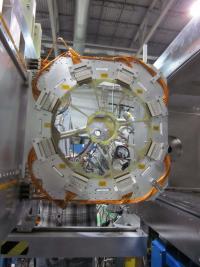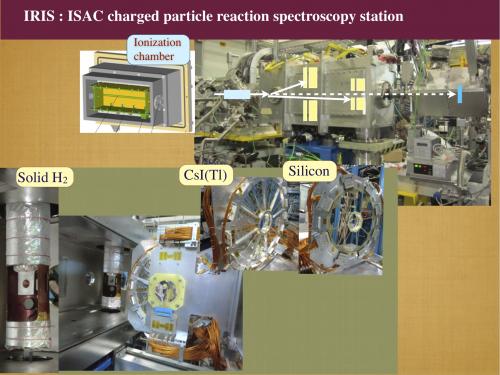The universe is powered by nuclear reactions in the interior of stars. It is through a network of nuclear reactions and radioactive decays in the cosmos elements in the world that we see around us came into being. Nuclear isotopes hold the key to life, being at the heart of all matter. Nature's process of creation in the cosmos occurs in extreme explosive conditions such as in supernovae or X-ray bursters. These environments foster the generation of nuclear isotopes that have greatly unbalanced number of neutrons and protons, are short-lived and hence rare to find on earth. The ISAC facility at TRIUMF can create some of such rare isotopes through nuclear reactions. Our knowledge on the rare isotopes is very limited since most of them are yet to be created and studied. Nuclear reactions are ways to look at the interior of such rare isotopes to unravel the mystery as to how nature creates them and binds the unusual mix of protons and neutrons. How does IRIS explore terra incognita? | |
The accelerated beams of rare isotopes produced by the superconducting linear accelerator at TRIUMF, strikes the ultra thin (50-100 micrometer) sheet of solid hydrogen (frozen ice sheet of H2/D2 gas). This initiates various processes where neutrons and/or protons can be exchanged between the rare isotope and the hydrogen target. The rare isotopes can bounce off as well as be excited to higher energy levels during the collision process. The end products of such reactions are scattered out of the target, and recorded by silicon semiconductor detector arrays which give information on the energy of the  particles. The granulation of these detector arrays provide knowledge on the angle of scattering. For the reaction products that are highly energetic a caesium iodide CsI(Tl) inorganic crystal array is used to measure the total energy. These information of the reaction energetics allow reconstruction of the unknown mass of new rare isotope states/resonances. This allows extending our knowledge even beyond the limit of the nuclear chart, i.e. beyond the boundary of bound isotopes. The pattern of scattered reaction products are highly distinctive for different locations of the nucleons inside the rareisotopes. Therefore, the reaction microscopereveals unexpectedarrangements and exotic forms that nature builds with rare isotopes. The beams of heavy rare isotopes are often cluttered with unwanted impurities of other ions. IRIS utilizes a novel low-pressure coplanar anode ionization chamber to identify the desired beam species from the impurities, thereby making highly precise measurements possible.
| |
Selected Publications : 6. "Proton inelastic scattering reveals deformation in 8He" | |

